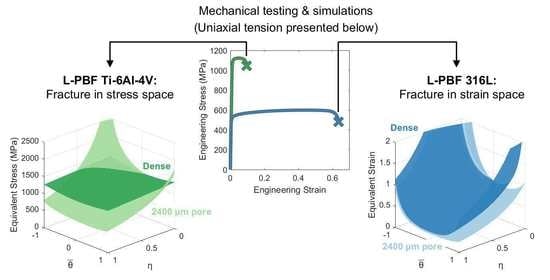Contrasting the Role of Pores on the Stress State Dependent Fracture Behavior of Additively Manufactured Low and High Ductility Metals
Abstract
Share and Cite
Wilson-Heid, A.E.; Furton, E.T.; Beese, A.M. Contrasting the Role of Pores on the Stress State Dependent Fracture Behavior of Additively Manufactured Low and High Ductility Metals. Materials 2021, 14, 3657. https://doi.org/10.3390/ma14133657
Wilson-Heid AE, Furton ET, Beese AM. Contrasting the Role of Pores on the Stress State Dependent Fracture Behavior of Additively Manufactured Low and High Ductility Metals. Materials. 2021; 14(13):3657. https://doi.org/10.3390/ma14133657
Chicago/Turabian StyleWilson-Heid, Alexander E., Erik T. Furton, and Allison M. Beese. 2021. "Contrasting the Role of Pores on the Stress State Dependent Fracture Behavior of Additively Manufactured Low and High Ductility Metals" Materials 14, no. 13: 3657. https://doi.org/10.3390/ma14133657
APA StyleWilson-Heid, A. E., Furton, E. T., & Beese, A. M. (2021). Contrasting the Role of Pores on the Stress State Dependent Fracture Behavior of Additively Manufactured Low and High Ductility Metals. Materials, 14(13), 3657. https://doi.org/10.3390/ma14133657






